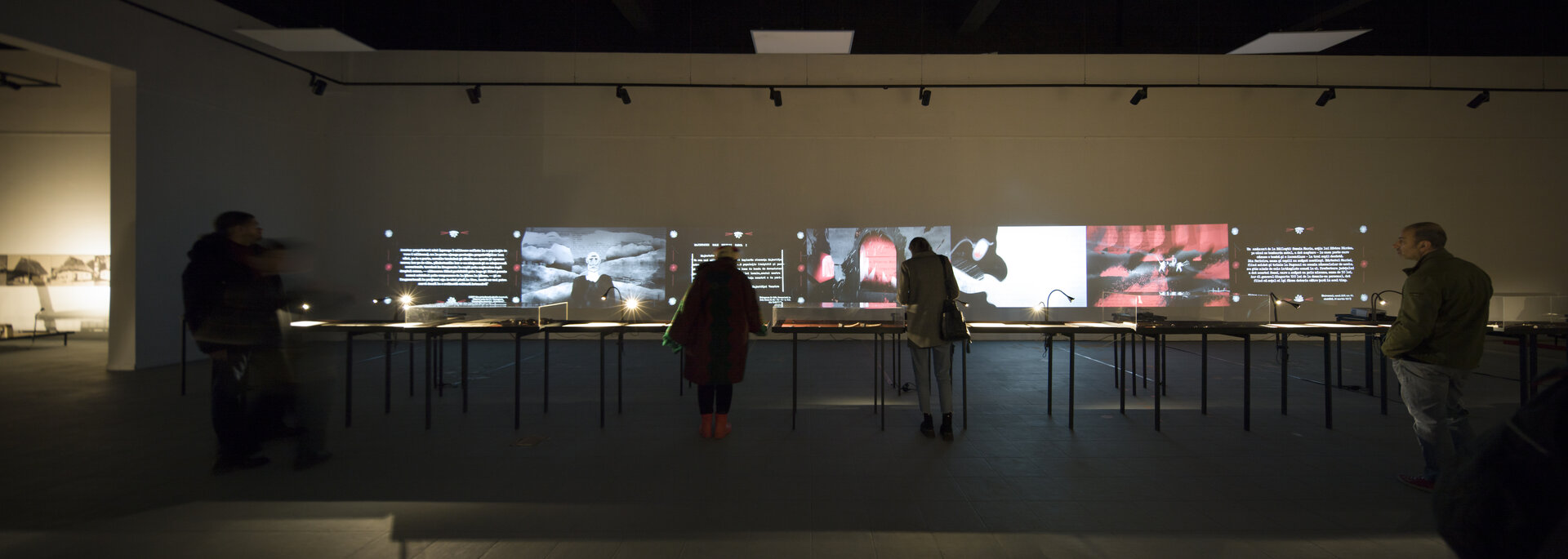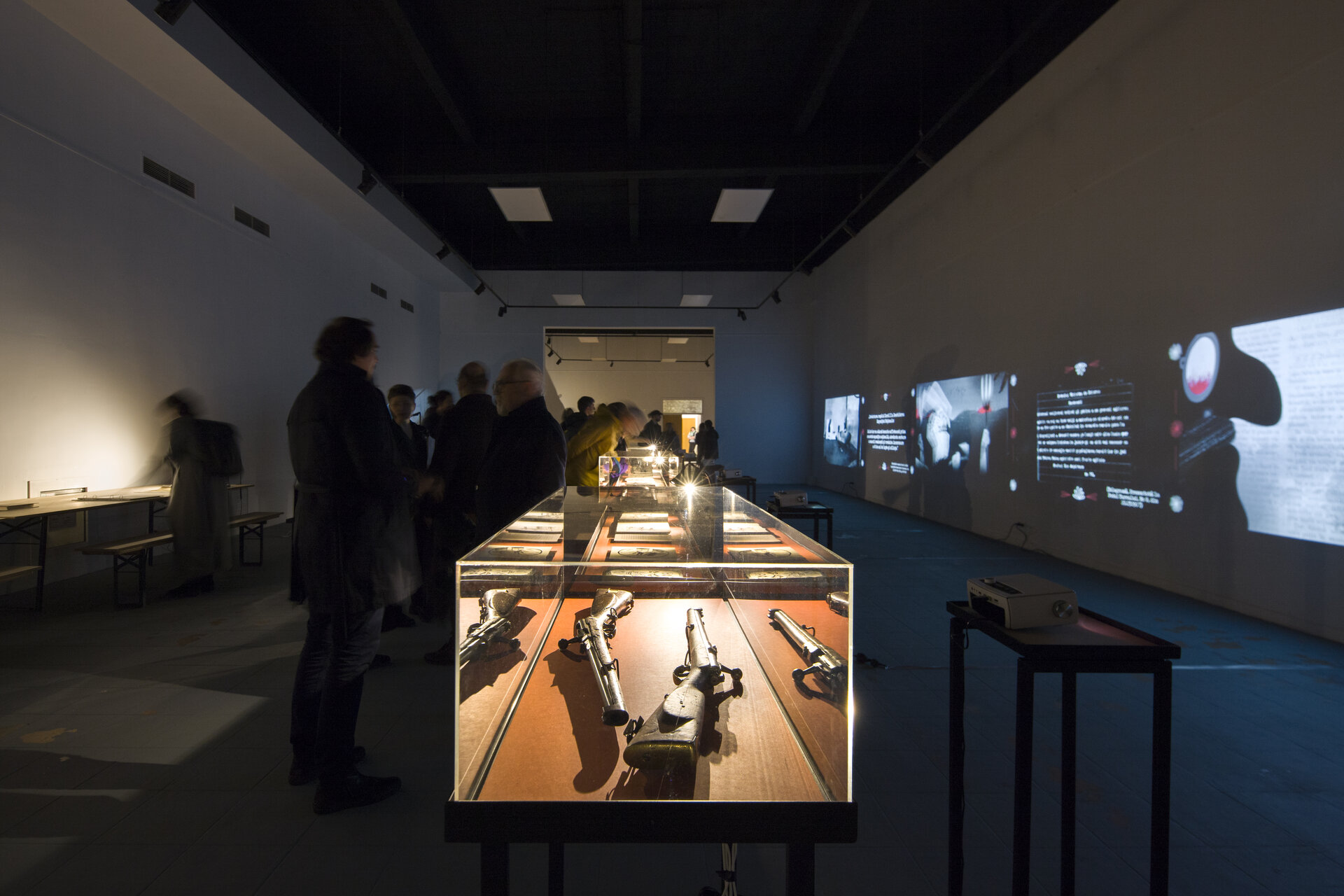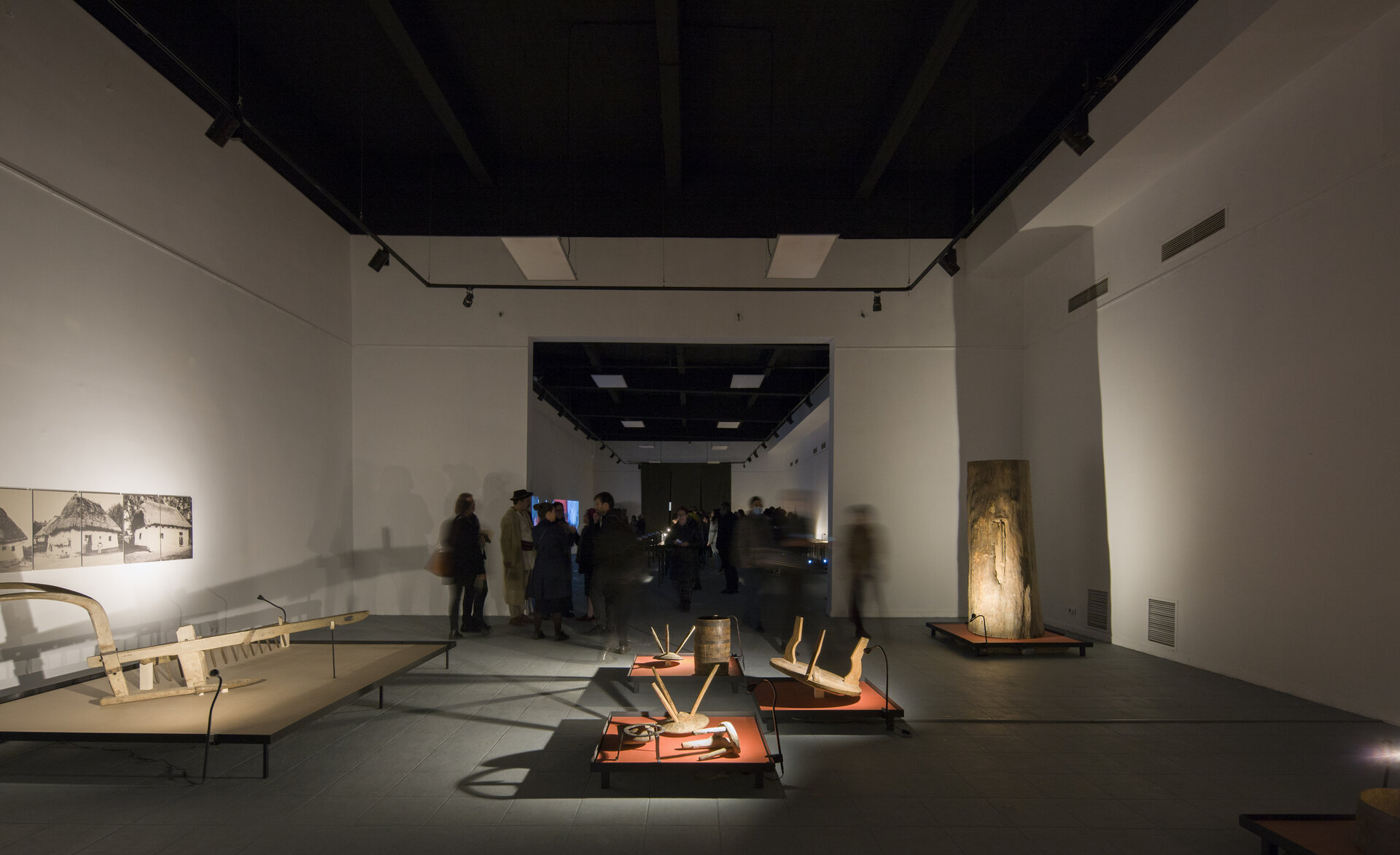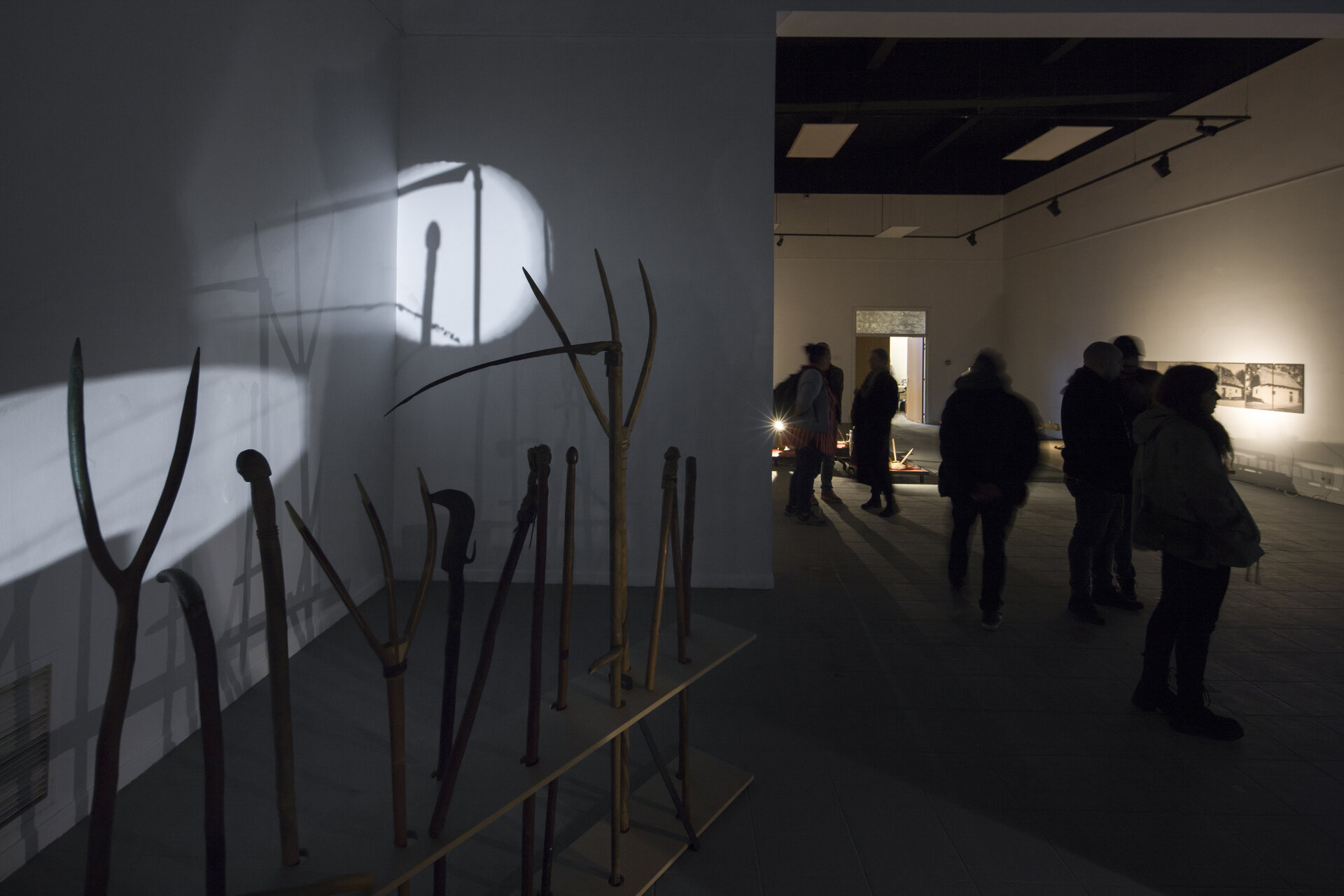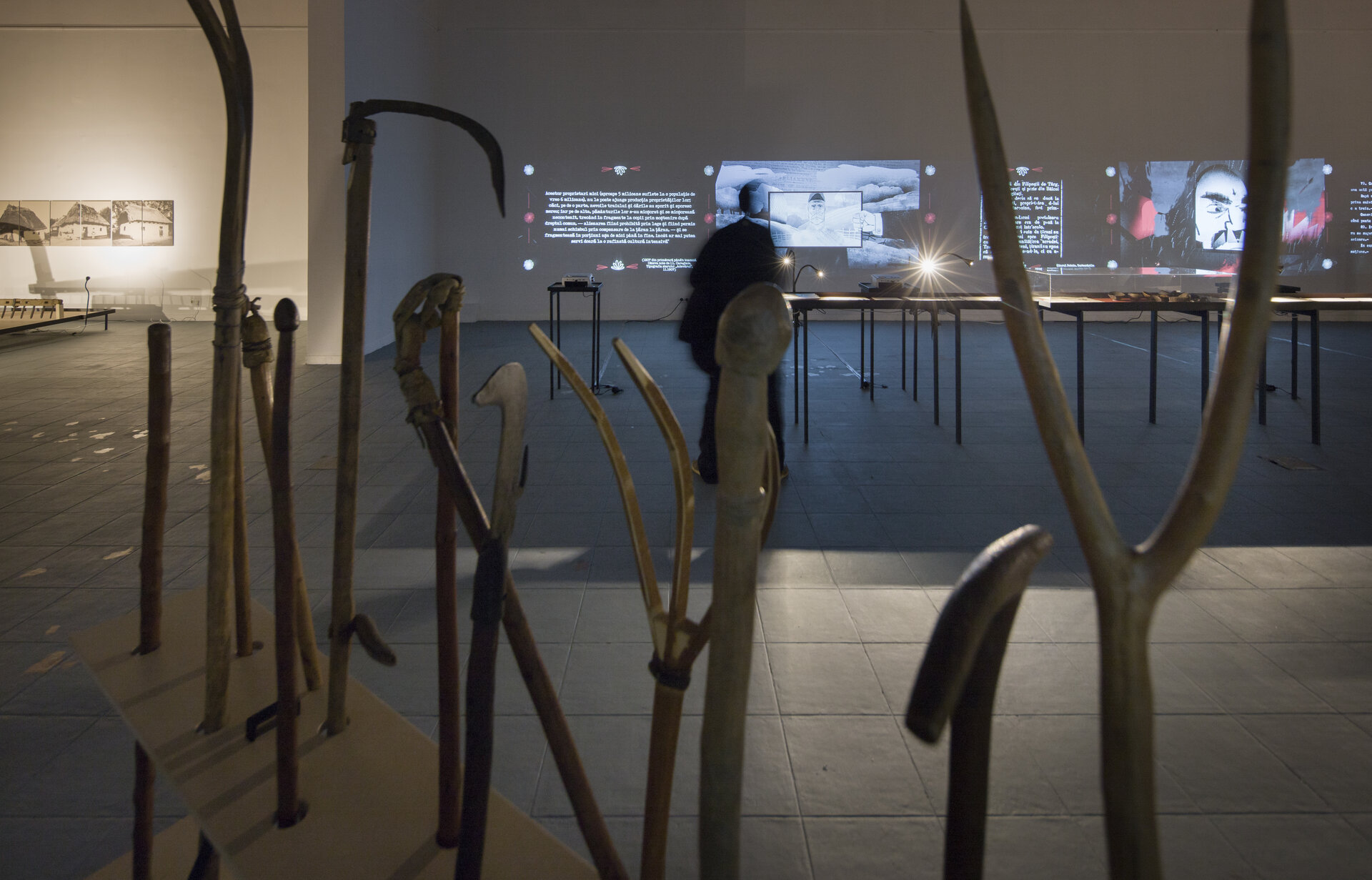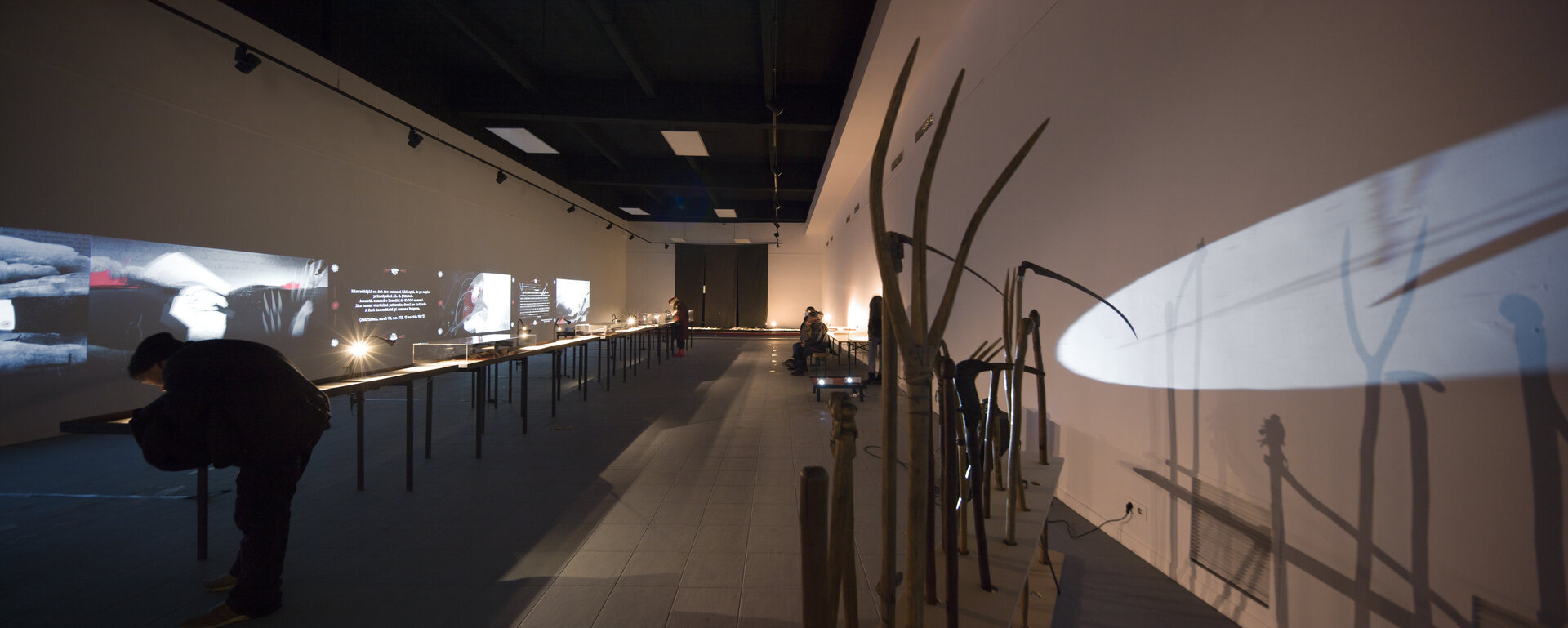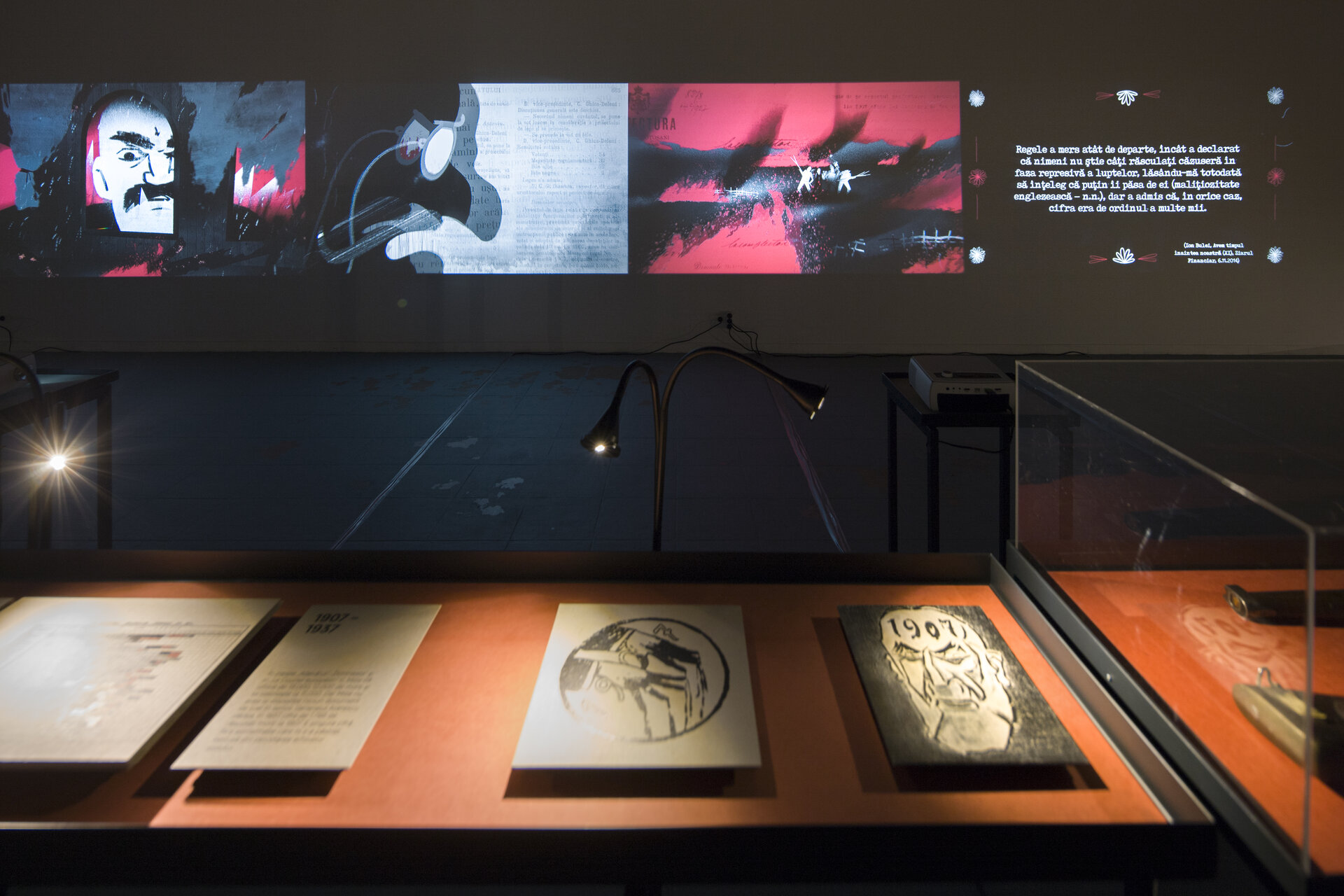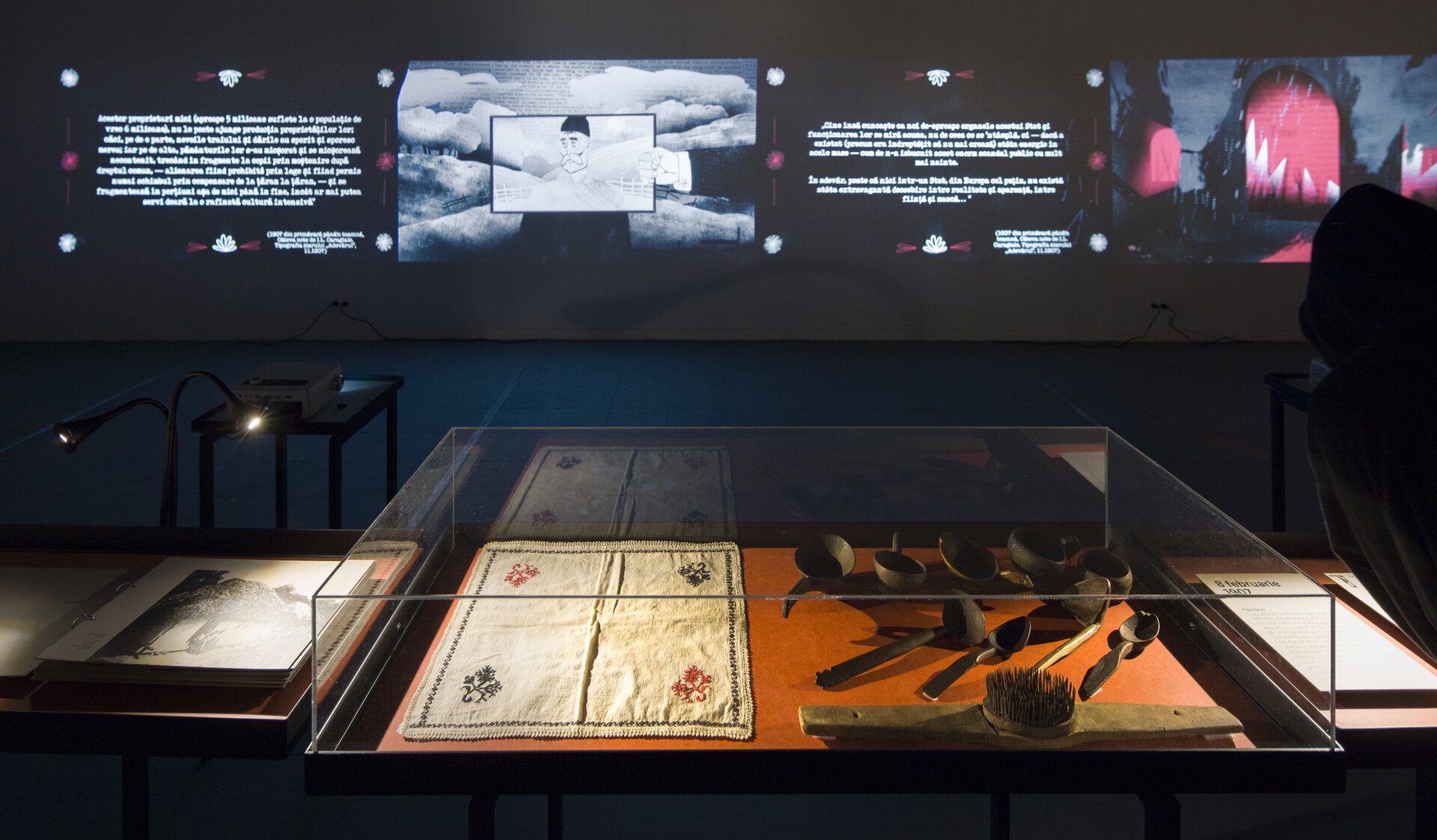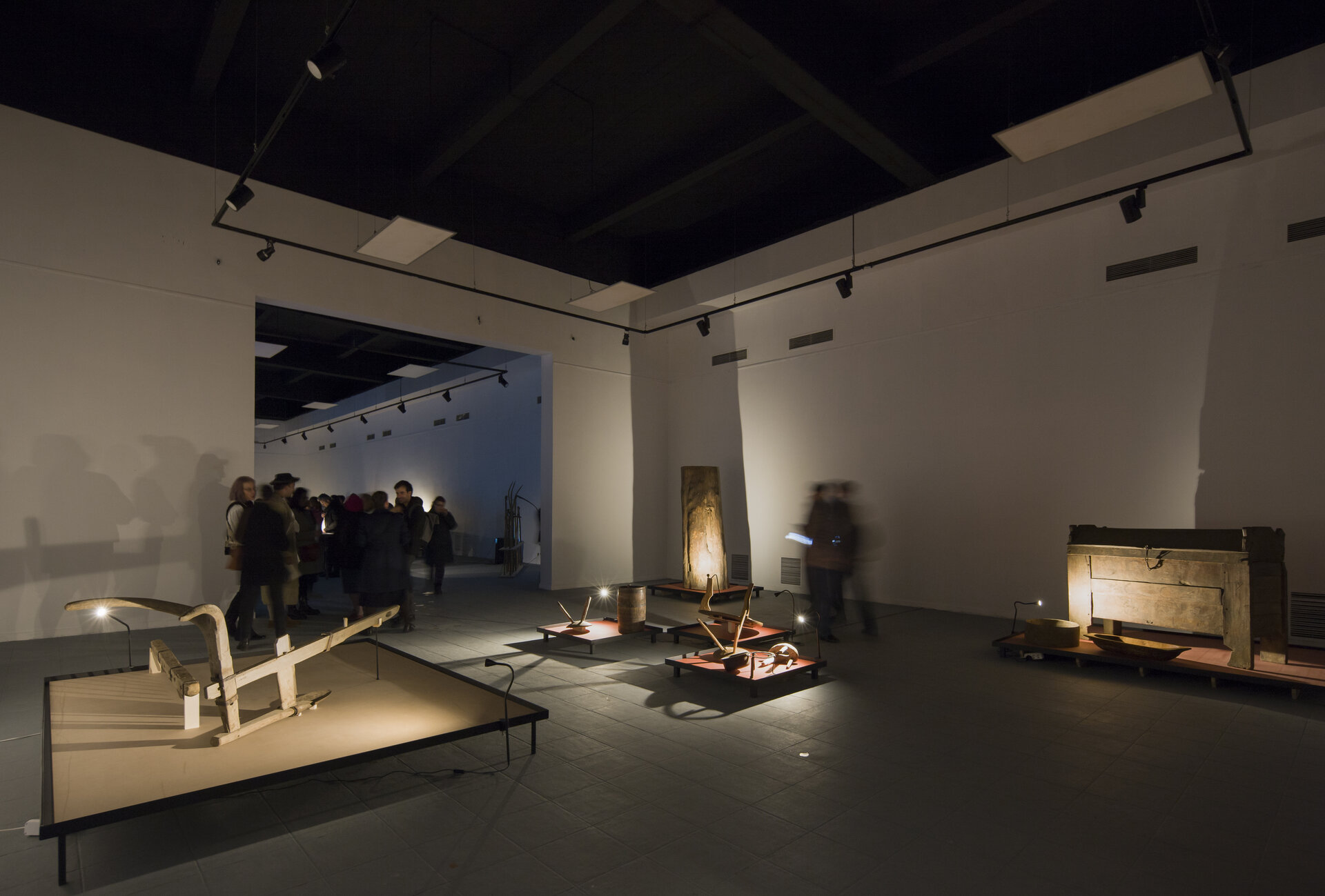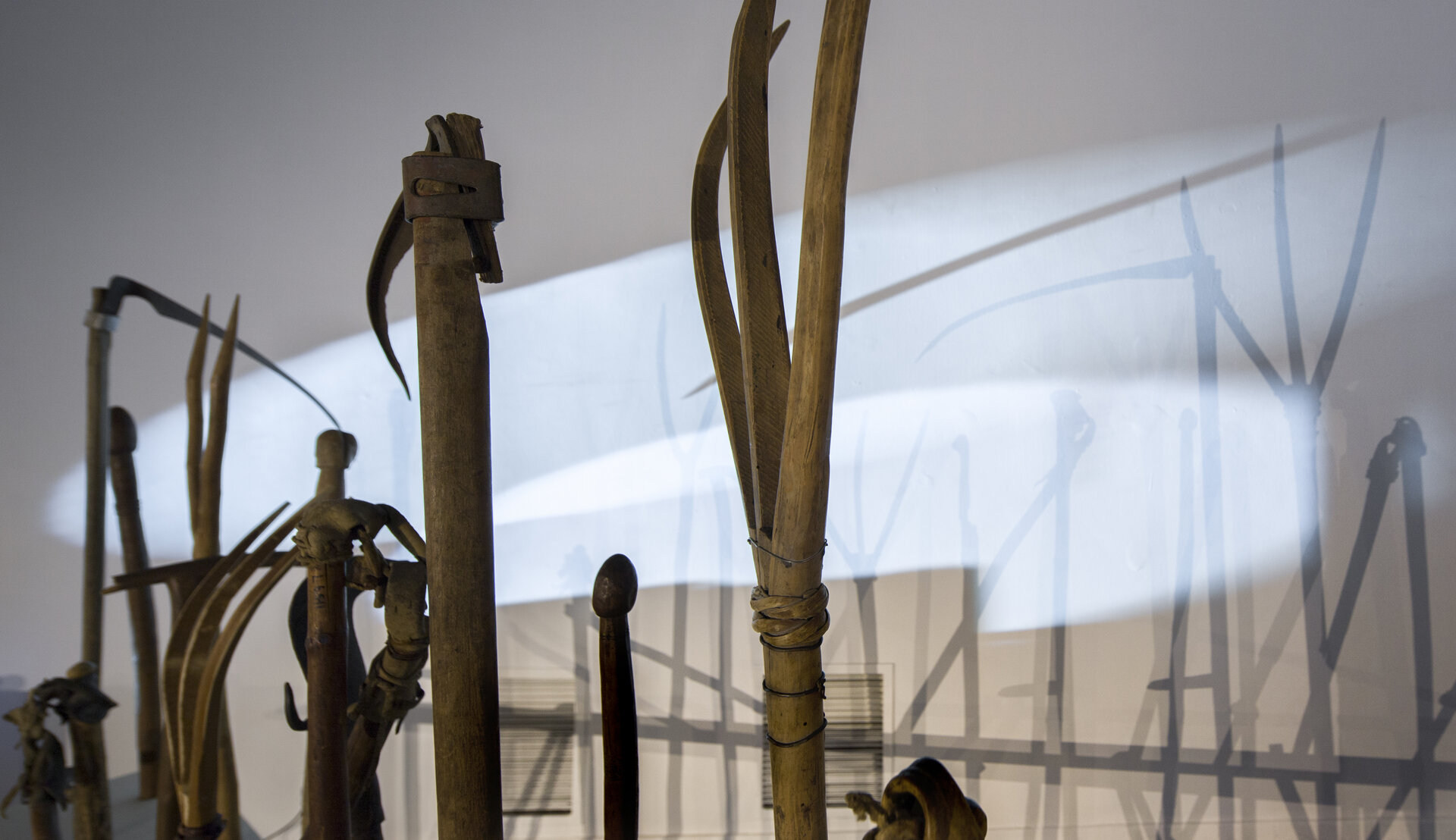
1907. We ask for land
Authors’ Comment
1907. We ask for land! is not a simple exhibition, for it does not tell a simple story. Because of the way the museum narrative has been constructed, the visitor has the freedom to empathetically explore a past event, learn well-documented historical information and form their own opinion.
Instead of relying on museographic stereotypes in which the simple life of peasants is idealized, the exhibition focuses on the aggressions suffered by the villagers, who dared to demand their rights, on their destroyed households and lives. The beatings and the arson of houses of renters and owners, shops or even state institutions lasted for several weeks and were followed by armed repression, which left behind even more victims. Visitors are invited into this space of violence, the main stake being to arouse empathy and raise questions about how history is written.
The exhibition reproduces the state of terror to which the peasants from different villages and towns of the old Kingdom were subjected to, using various means. The elements through which this world is reconstructed are a video installation positioned like a fresco on an entire wall, the low light recreating an oppressive state, broken by sound and spotlights that highlight the objects and documents in the exhibition. The background soundtrack, in addition to the rattling of bullets and typewriters, includes recordings of songs collected after 1907. One of these songs tells the story of the uprising whilst the songs used at the burial symbolically tell the story of the peasants who lost their life in those days.
The main piece of the exhibition is the series of seven animations made by Vână Animation Studio, from the mentioned video installation. Like "visual haikus", the 7 animations focus on a few key moments, making a timeline of the main events. The animations recreate harsh scenes from the beginning and throughout the uprising with politicians spitting bullets, peasants raising sickles in the air, or peasants being crushed by military boots. The first animation shows a peasant house from which all the objects disappear one by one culminating with the disappearence of one of the family’s children. At the end, a female figure appears, looking towards a burning village in the distance.
A surprising element is the way in which these animations communicate with the few objects on display. The absolute precariousness of the rural household at that time is represented by a primitive wooden plough, a few wooden pots and spoons and other household items. Instead of seeing the beauty and simplicity of the peasant home, their universe is turned upside down, visitors being shown the moment of a house explosion, in which poor furniture flies through the air.
At the same time, in the middle of the exhibition space there is a long table with several display cases, which house the heritage objects that needed protection: old sickles or rifles similar to those used by soldiers. On the same table, there are also illustrations and caricatures from the period that capture the tensions that engulfed the country in 1907. Visitors have the opportunity to browse the press of the time and understand in depth the seriousness of events, but also notice the fact that the voice of the peasants is absent from the public discourse.
In addition, the exhibition manages to shed light on the hidden tensions of those moments. For example, soldiers' uniforms are juxtaposed with peasant clothes to show that there were casualties on both sides, but also that peasants were conscripted into the army and forced to shoot their own. The installation where scythes, hayforks and clubs are placed, illuminated by a projector, shows that, having no other weapons, the peasants turned their own work tools into weapons. These became over time one of the iconic images of the 1907 Uprising.
- After Sculpture - Sculpture After
- RDW 2022 - Courtyard Design of Combinatul Fondului Plastic - Pretty Heap
- Pastoral Calendar
- Reflections of Queen Mary in Cotroceni Palace
- All balloons up high! - Architect’s Stand
- PORC Rap-Up Store
- VL_SD
- Isolation in a Series of Liminal States 2023
- The Little Magenta Rinding Hood
- Be Bionic! Experimental Bionic Architecture
- Volume of a sleep
- BoxIT !
- 1907. We ask for land
- Diploma Show 2023
- Inventory of the Week
- Nostalgia with a twist
- CORPUS CONFECTUS
- Victor Brauner - Inventions and magic
- Individual All-around
- Romanian Design Week 2023
- Innovation
